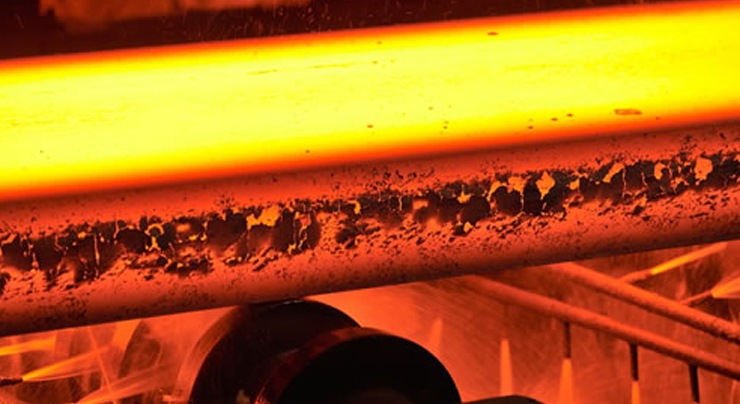
How graphite is used in metallurgy, in the ferrous and non-ferrous metal industries. Examples include heat treatments within vacuum or inert environments.
Metallurgy
Graphite products and their application within the metallurgy sector.
Extra Information:
Ferrous metals are the metals which contain iron, added for strength. These metals are favoured in industries which require:
- High tensile strength
- Durability
Applications for Ferrous metals include:
- housing construction
- large-scale piping
- industrial containers
Non ferrous metals do not contain iron. These metals are favoured in applications that need a lighter weight material, such as the aerospace industry.
Graphite in the metallurgy industry:
Graphite is used across the metallurgy industry, as a result of its capacity to resist high temperatures and to lubricate continuous/ rolling machinery.
Vessels used to heat chemicals to extremely high temperatures or contain melted metals and ores.
Applications: Laboratories, metal casting, smelting, sintering furnaces
Why graphite? Can withstand extreme heat, high melting point, chemically inert, conducts heat well
Continuous casting is the process of heating a metal to a molten state then allowing it to solidify into whatever shape is needed.
The machine used in this process has a component called a die, which is made of graphite. The die enables the molten metal to be shaped and helps extract the heat that allows the metal to cool and solidify.
Applications: Laboratories, metal casting, smelting, sintering furnaces
Why graphite? Resistant to high temperature, high melting point, chemically inert, conducts heat well
Rotating devices consisting of blade-shaped vanes around a central shaft that are designed to alter the flow and/or pressure of liquids and gases. When the impeller rotates, it sucks in the liquid or gas and sends it out the other side.
Applications: Centrifugal pumps, vacuum pumps, agitation tanks, gas injection systems
Why graphite? Chemically inert, resistant to wear, resistant to high pressure
Sintering means shaping metals, ceramics and plastics by using heat and/or pressure without melting the material. Read more about the process here.
Applications: Manufacturing drill bits, tools for cutting diamond or ceramics
Why graphite? Resistant to high temperature, high compressive strength, resistant to thermal shock
Used to mix and stir molten metal, the graphite helping to remove impurities and skim metal surfaces.
Applications: Melting precious metals and scrap metals, mixing alloys
Why graphite? Resistant to high temperature, non-stick
Heat treatment means using intense heating and cooling to change the structure of a metal or alloy to prolong its working life. Boats are containers used to hold the metal or alloy while it is being heated.
Applications: Vacuum furnaces, induction furnaces, sintering furnaces, brazing furnaces
Why graphite? Resistant to extreme heat, chemically inert, resistant to thermal shock, high density
High temperature furnaces including vacuum and inert heat treatment use graphite for:
- Busbars
- Graphite rods
- Heating elements
- Insulation
